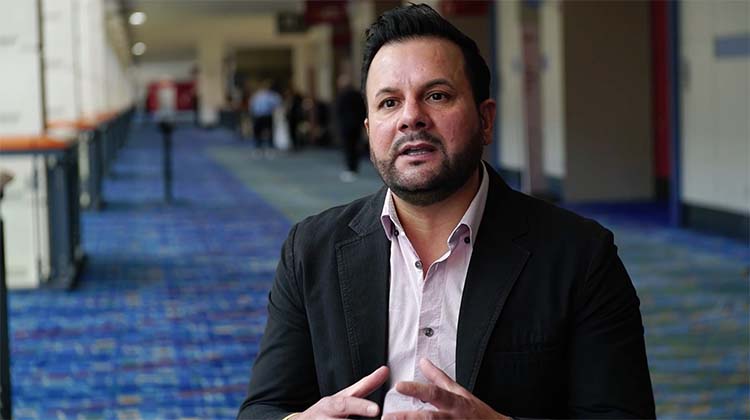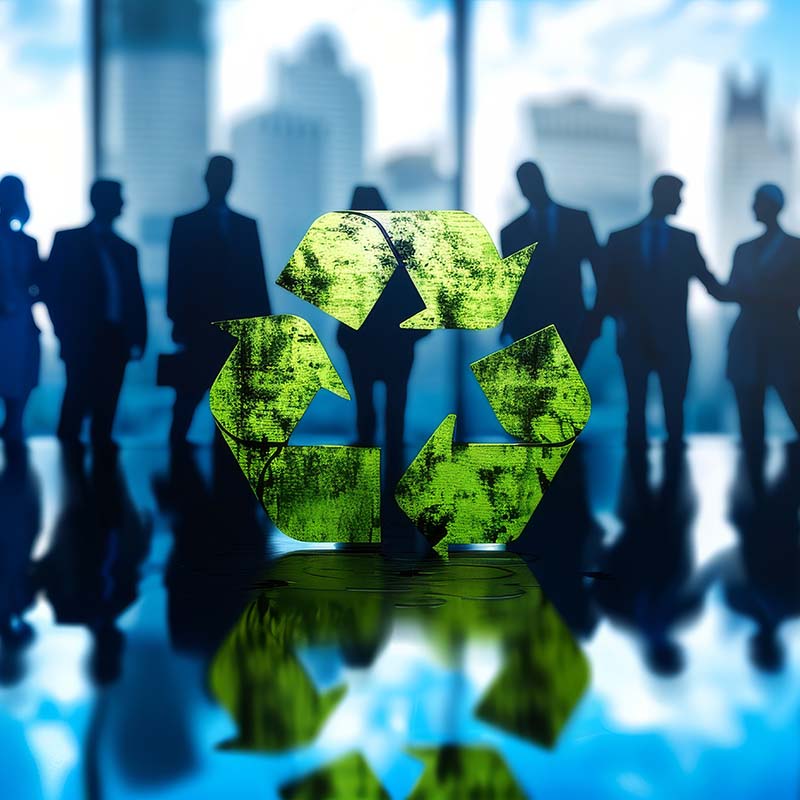As the tech industry shifts toward sustainability, data centers have emerged as a critical focal point in the transformation. In this video interview, meet the guy who led the creation and ongoing management of a modern, software-defined data center for Nutanix.
“Sustainability starts at the data center, it being the largest consumer, makes the biggest impact, and can have the most impact for reductions,” said Harmail Chatha, senior director of cloud operations at Nutanix.
He noted that early data center design focused on efficiency. Sustainability was almost absent from tech conversations.
He said Nutanix's journey towards sustainable IT began when the company was founded.
“Whether they knew it then or not with hybrid converged infrastructure, it was this very sustainable approach, so from the get-go we've always been a sustainable company,” said Chatha.
That initial approach was based on a hybrid converged infrastructure. By 2018 Chatha began leading the buildout of one of the industry’s most sustainable data centers.
“When we revamped our data center strategy when we went to hyperdense rack design, we even got more sustainable.”
In this video interview, Chatha describes the importance of optimization, consolidation, collaboration and efficiency within the platform in Nutanix’s journey to sustainable data center operations.
Transcript:
Ken Kaplan: When you started building these early on, sustainability was definitely a part of it. You want to make them efficient, but it's shifted.
Harmail Chatha: So when I first started, sustainability wasn't even a thing in the industry, right? You heard about sustainability farms and food production and stuff like that, but you didn't hear about it too much in the tech sector. And of course, larger companies like HPE, and Cisco, have been at it for a long time, but customers really, really never understood it and it wasn't very top of mind. The way that I got involved in sustainability really started in 2018, not knowing that I was trying to build a sustainable data center, but I've actually built one of the most sustainable data centers. And what the premise of that build-out, the architecture then was, we wanted it optimized. We wanted to ensure the amount of power coming into a rack was exactly the amount of power we're using within the rack, and that the rack wasn't under provision.
So we're only using half of the rack, but we're maximizing full utilization of the rack itself. As I started getting more involved with ESG and specifically the E portion of it, IT consumes a major part of total power in any organization and IT manages the data centers. And we started to realize, wow, we have some really efficient data centers that we architected back in 2018, and we got some not-so-efficient data centers around the world that are more colo retail, a couple of racks here and there.
So for us, our multi-megawatt data centers are the most sustainable data centers. We sought out partners that were focused on minimizing their environmental impact by having a lower PUE, and by having innovative strategies around water reclamation. And that really offered us solutions and options around renewable energy as well. So that baseline with that premise set, and now we're in 2023 and sustainability is top of mind for everybody. For example, we conducted an annual ECI, Enterprise Cloud Index, survey with 1500 global IT leaders, and 92% of the respondents said that sustainability is more top of mind this year than it was last year. With that sustainability starts at the data center. I mean, there are obviously different scopes of sustainability, but IT being the largest consumer makes the biggest impact and can have the most impact on reductions as well.
Ken Kaplan: And this experience that you're gaining, you've done the work that was very successful.
Harmail Chatha: So it was an epiphany to be involved in ESG, specifically the E, and to understand that data centers I built in 2018 are a core part of Nutanix's environmental impact and the fact that they're so sustainable. We don't have to go back and reinvent the wheel because our data centers are already hyper-dense. We're already maximizing the utilization of power and real estate within the data center. On top of that, we're already gaining more impact by having renewable energy options and being able to offset or be carbon neutral in our data centers as well. So we got lucky. We're ahead of the game. It was very smart and intuitive for us to kind of have that focus of optimization, which has ultimately led to more efficiency in the environmental impact.
Ken Kaplan: Tell me about your journey, Nutanix's journey towards sustainable IT.
Harmail Chatha: So Nutanix's journey really started when the company started itself, right? A step in the right direction, whether they knew it then or not, with hybrid converged infrastructure was this very sustainable approach. So from the get-go we've always been a sustainable company per se. But really in 2018 when we revamped our data center strategy, when we went to hyperdense rack design, we even got more sustainable. We only got the amount of power that we needed for our consumption. We only got the right amount of real estate that we needed for our hyperdense racks as well. So those two steps were key in our sustainability journey. But ultimately what we focus on is reducing our infrastructure footprint. We try to consolidate as much as we can. Our standard architecture in the data center is a four-node block, so that way we're maximizing the power in the space within the rack in itself.
So that was really the third step we took is the consolidation. And then within our platform, we ensured that we weren't over-provisioning and underutilizing, meaning that we only provisioned infrastructure that we needed for a specific workload or a data set without an overkill of infrastructure in itself as well. We avoided VM sprawl problems as well, ensuring that we're only running the VMs that we need to run and then hibernating or deleting the rest of the VMs as well. And then ultimately what that led to is a carbon reduction on the back end of it, right? Because our environment is so highly efficient from the data center provider to our power consumption and real estate utilization to our consolidation of infrastructure, eliminating waste of over provisioning, and underutilizing has really led to a much more sustainable carbon-neutral footprint for us in the data center environment.
Editor’s note: Learn more about Nutanix's sustainability IT solutions and Nutanix’s ESG efforts.
Jason Lopez is executive producer of Tech Barometer, the podcast outlet for The Forecast. He’s the founder of Connected Social Media. Previously, he was executive producer at PodTech and a reporter at NPR.
Ken Kaplan contributed to this story.
© 2024 Nutanix, Inc. All rights reserved. For additional information and important legal disclaimers, please go here.





